5 Common Biting Spiders
5 Common Biting Spiders
There are over 4,000 spiders found in North America, but only a handful of spiders are known to bite humans. Of the spiders that do bite, there are five well-known spiders that can cause any medical problem, and all can be found, scarily enough, around homes. Since these spiders have serious bites, it is important to be cautious if you want to kill it yourself, but pest control is always a viable option for dealing with these dangerous arachnids.
While spiders do not pose any danger to us, there are some spiders that can produce poison and be harmful for us. With just a look we develop an opinion about spiders, but before concluding if they’re harmful or harmless, it’s important to consider what poisonous spiders in North America looks like so we know which ones we should avoid.
1. Brown Recluse Spider
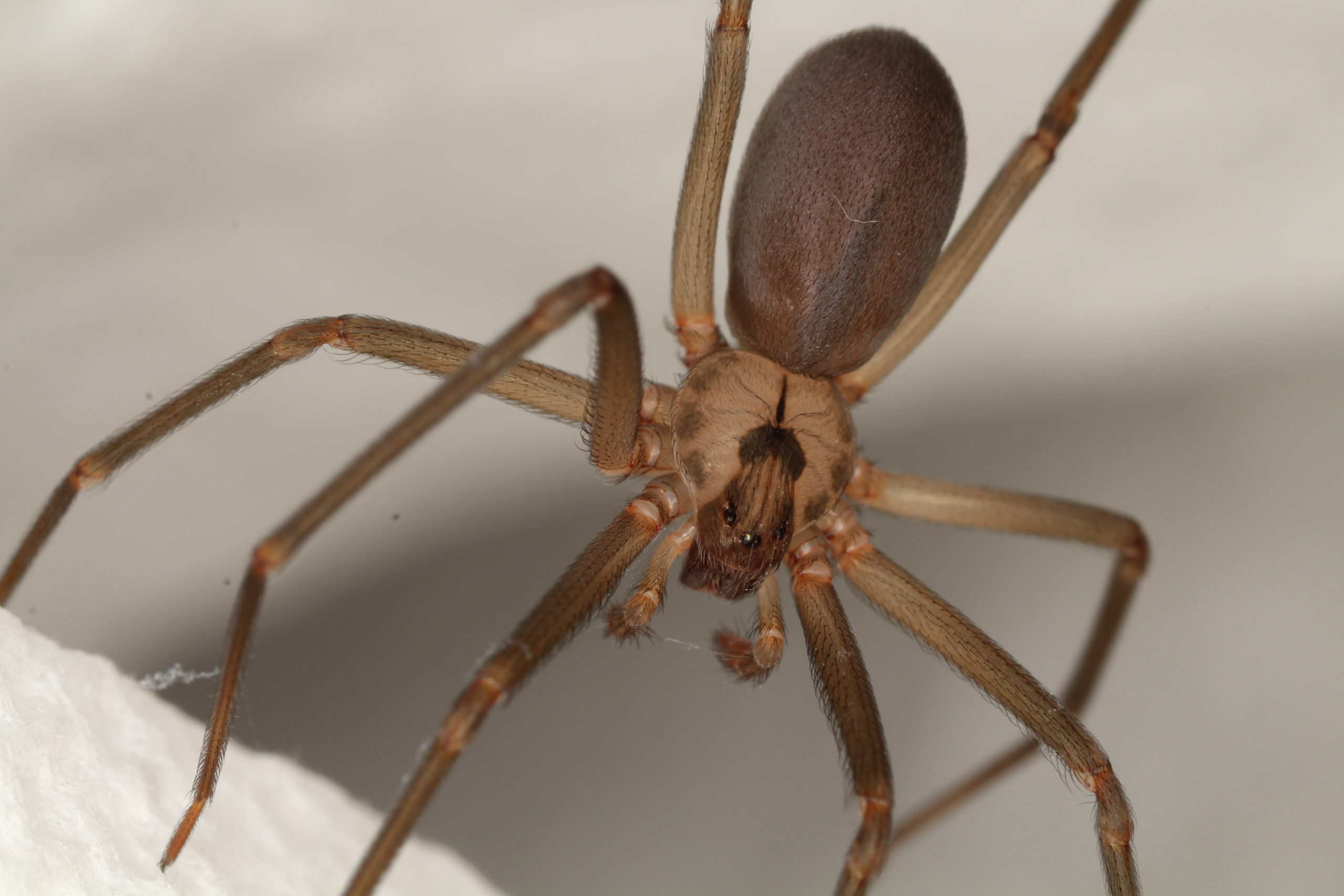
Brown recluse spiders are found throughout the United States. They are commonly referred to as violin spiders or fiddleback spiders due to a characteristic dark brown violin-shaped mark on the back of the cephalothorax (center portion of spider right behind its eyes). They get their name from their color and reclusive nature. Bites from brown recluse spiders are dangerous because they may not be felt initially, but the venom can slowly destroy human tissue. If the venom get deep enough, it can affect muscles. An untreated bite can lead to an infection combining with the venom to make for a potentially fatal bite. These spiders aren’t aggressive – they just don’t like humans very much, especially when we’re moving around too much for them to be able to build their webs or catch food. They tend to hide in undisturbed spaces such as boxes, shoes, clothes, and bed sheets.
The symptoms of a brown recluse spider bite include itchy skin, nausea/vomiting, fever, and even the destruction of tissues beneath the skin. Most people confuse this spider with common house spiders, which are harmless, so it is important to recognize the difference.
2. Black Widow Spider
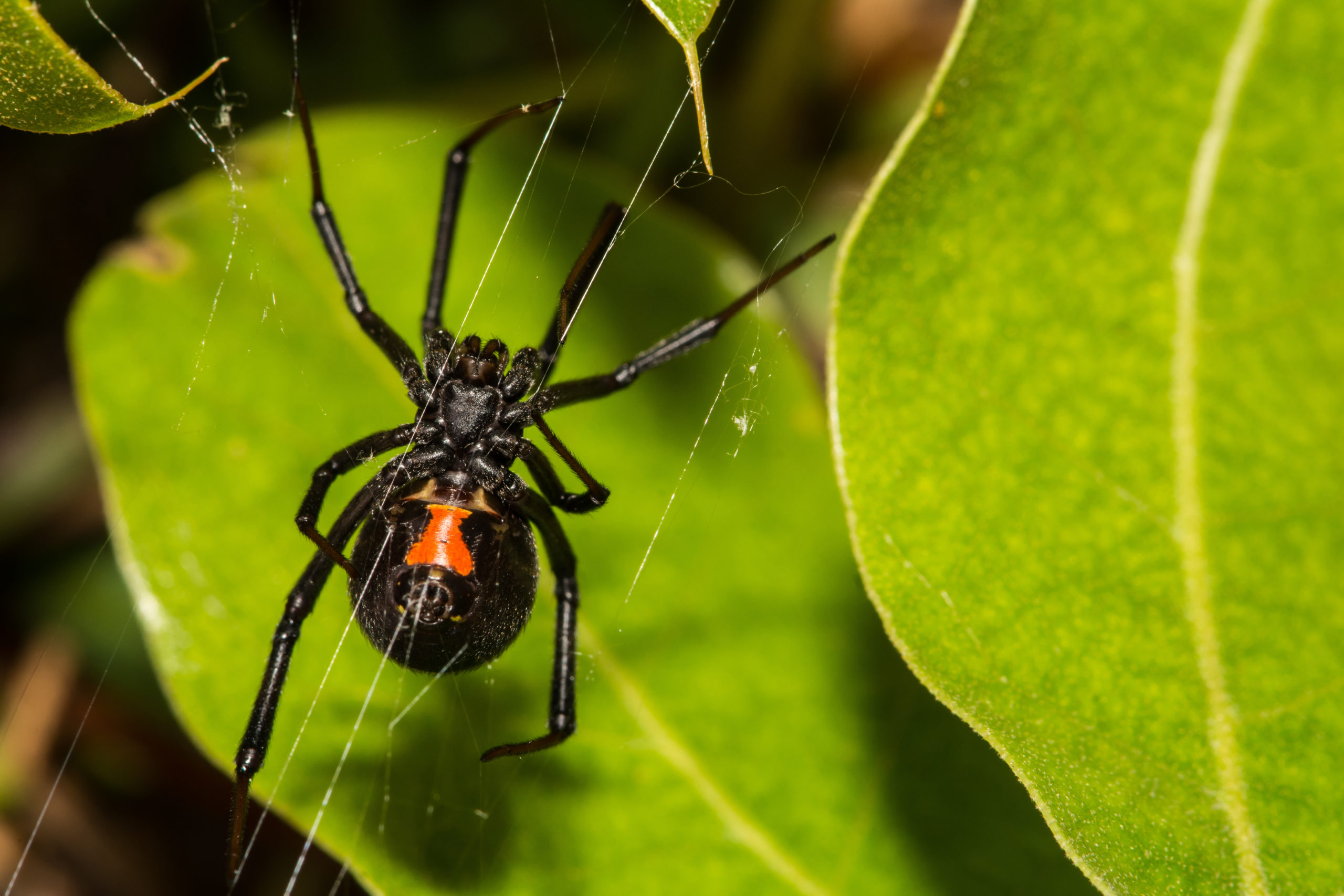
While Black Widow is the name of an awesome comic book superhero, it is also a poisonous spider that is well-known by its red or orange hourglass shape on its abdomen. This mark acts as a warning for other predators, as many birds and other insects avoid red coloring since it’s a warning symbol. The black widow and its sub-species is widely regarded as the most poisonous spider in the U.S. It thrives in warm weather, which explains why we often find them in the summer. But since winter does not kill them and simply makes them dormant, they can begin making themselves known in the spring when they mate. The black widow is quite a small spider, but its venom is about fifteen times stronger than another common venomous creature: the rattlesnake. The bite is not enough to be a high risk for everyone; due to the small size of the spider and its venom release, it is mainly a danger for younger children and the elderly.
Symptoms of a black widow bite include swelling around the bite, chills, sweating, difficulty breathing, weakness, cramping, and nausea. If you believe you have been bitten by a black widow, seek medical attention immediately.
3. Hobo Spider
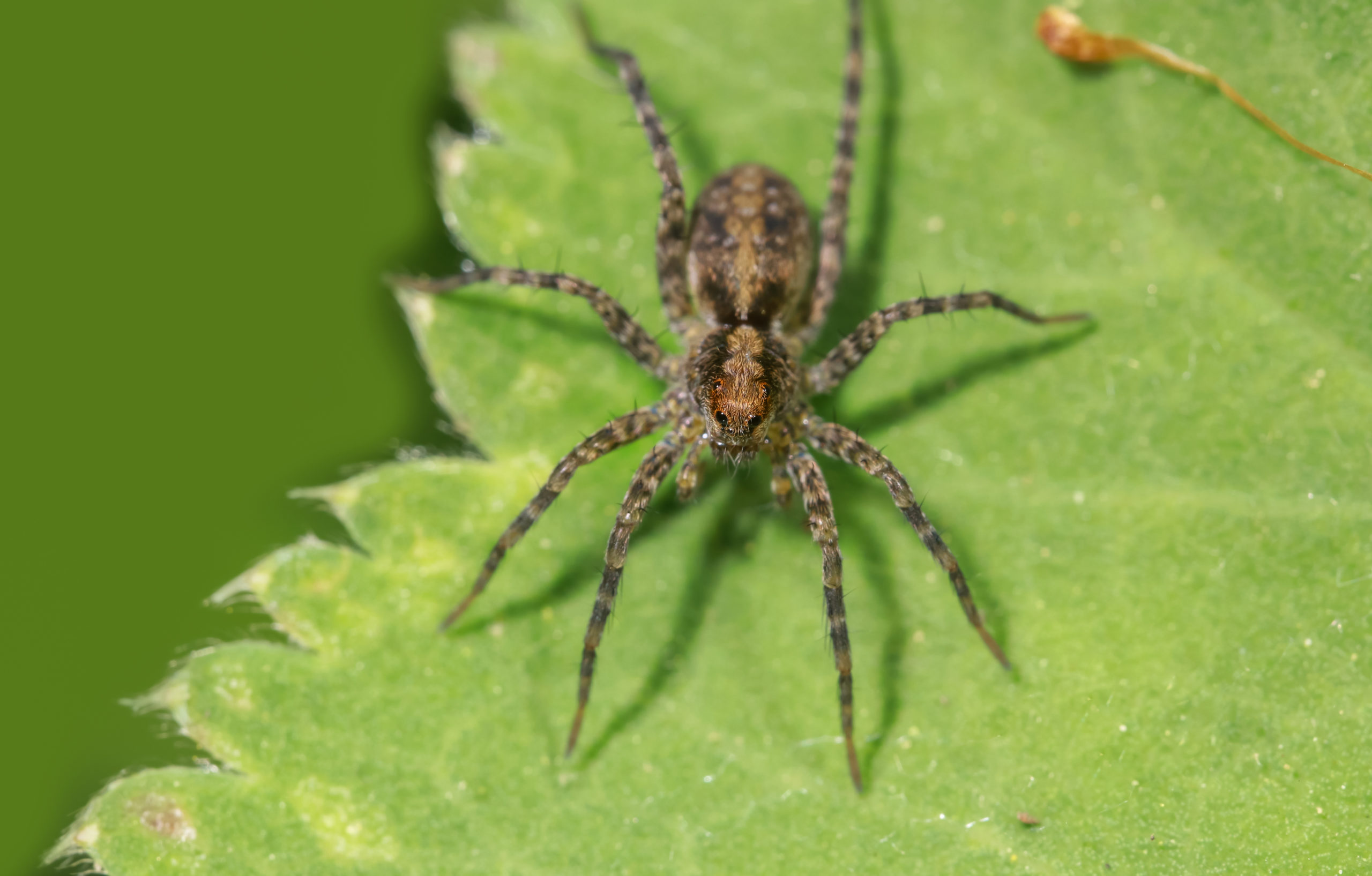
This spider is similar to the brown recluse, in that its bite seems harmless at first but can turn into a problem if left untreated. Hobo spiders are brown and small, ranging from 1/3 to 2/3 inches in length. These spiders like to stay on the ground, and they make their funnel-shaped webs in small crevices, such as cracks in a wall, a shed, or beneath woodpiles. Hobo spiders are also called the Aggressive House Spider because they often bite without being too provoked. It is usually when they are squished or touched in any way. They are also fast, so it is probably best not to catch it as it is almost guaranteed to result in a bite.
The symptoms of a Hobo Spider bite vary, depending on how quickly you can get it treated. Like the brown recluse, it can also cause tissue death around the bite. Common symptoms after a day include blistering and leaking of the bite area, nausea, blurry vision, fatigue, and a headache that can last several days.
4. Wolf Spider
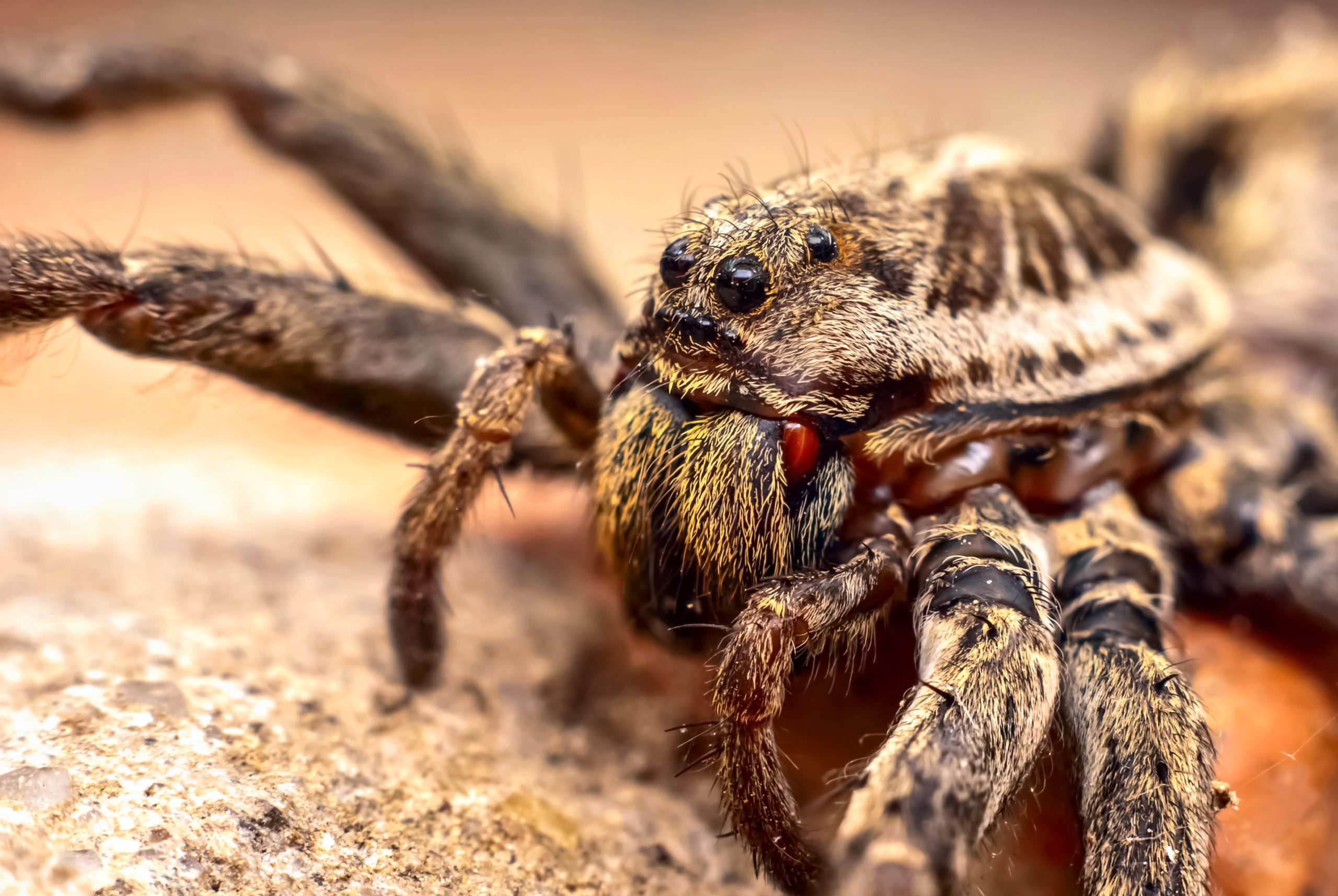
Wolf spiders are a bit larger than the other spiders on this list, as they can be over an inch in length. A good way to identify this type of spider is through their eyes: the four smaller ones are in the front and the four larger eyes on in a square on top of its head. Female wolf spiders carry their egg sacs attached to their abdomens, then carries her spiderlings on her back for a while. These spiders can be found under rocks, debris, garden areas, or in burrows underground. They also make funnel-shaped webs in low shrubs, piles of leaves and outdoor furniture such as rockers and swings. Their venom is not fatal like the brown recluse spider’s, but they’re very agile spiders that will run away quickly when disturbed so it can be hard to receive treatment if we get bitten by them – mostly because we don’t know when and where we were bitten!
Symptoms of a wolf spider bite are more mild than the first three spiders, but they are still painful and have the potential to be infected. The symptoms include itchiness and pain around the bite, swelling, nausea, and rapid pulse.
5. Yellow Sac Spider
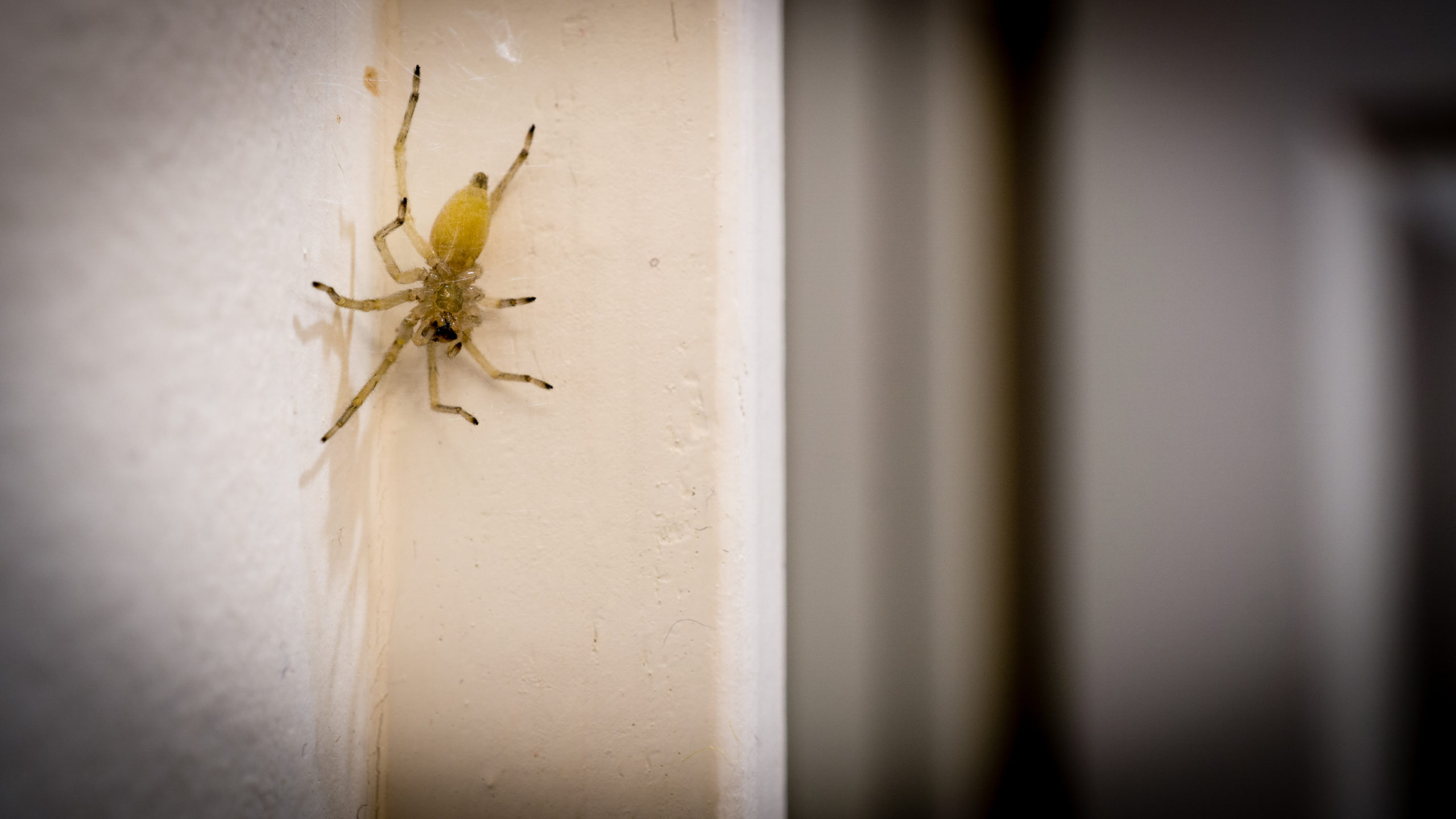
These spiders, named after their yellowish sacs, are not nearly as dangerous as the others listed here. The Yellow Sac Spider mainly lives in gardens during the summer, but it likes to come inside during the autumn when the temperatures cool down. Due to its light coloring, the spider may go unnoticed for a while while it stays in the corner of a wall or the ceiling of a home. Although these spiders are hunters that search for food at night, their bites on humans typically occur when the spider is disturbed or stuck in an article of clothing that is being put on. They are quite frequent biters and might bite humans more often than other spiders.
Even though they bite humans quite often, the bite of a Yellow Sac Spider does not typically result in medical emergencies. The symptoms include burning on the bite, nausea, fever, and cramps. Just because the bite is not particularly venomous does not mean it should be ignored, so make sure to treat it immediately.
Preventative Measures
The best way to avoid a spider bite is to make sure your home isn’t welcoming to them in the first place. Trim back any landscaping that touches the house, as it provides an easy way for spiders to get inside. Check clothes and shoes before putting them on if you live in a particularly spider-favorite area. Eliminate their food sources by keeping the home as insect-free as possible. But if you want to be sure that spiders common in your area will not want to enter your home, or if they already have, contact pest control services. The technicians are equipped to handle any spider problem so that you don’t have to make eye contact with a spider while you are relaxing in the comfort of your home.
Citations
10 most dangerous spiders of north america (n.d.). North American Nature. Retrieved February 17, 2022, from https://northamericannature.com/10-most-dangerous-spiders-of-north-america/
Machemer, T. (2021, July 7). Eight fun facts about black widows. Smithsonian Magazine. Available at https://www.smithsonianmag.com/science-nature/eight-fun-facts-about-black-widows-180978098/ (Accessed February 17, 2022).
Mekonnen, S. (n.d.). Brown recluse spider bites. Poison Control. Available at https://www.poison.org/articles/brown-recluse-spider-bites (Accessed February 17, 2022).
Wolf spiders. (2021, August 23). Australian Museum. Retrieved February 17, 2022, from https://australian.museum/learn/animals/spiders/wolf-spiders/
Yellow sac spiders. (n.d.). Michigan State University Plant & Pest Diagnostics. Retrieved February 17, 2022, from https://www.canr.msu.edu/resources/yellow-sac-spiders

